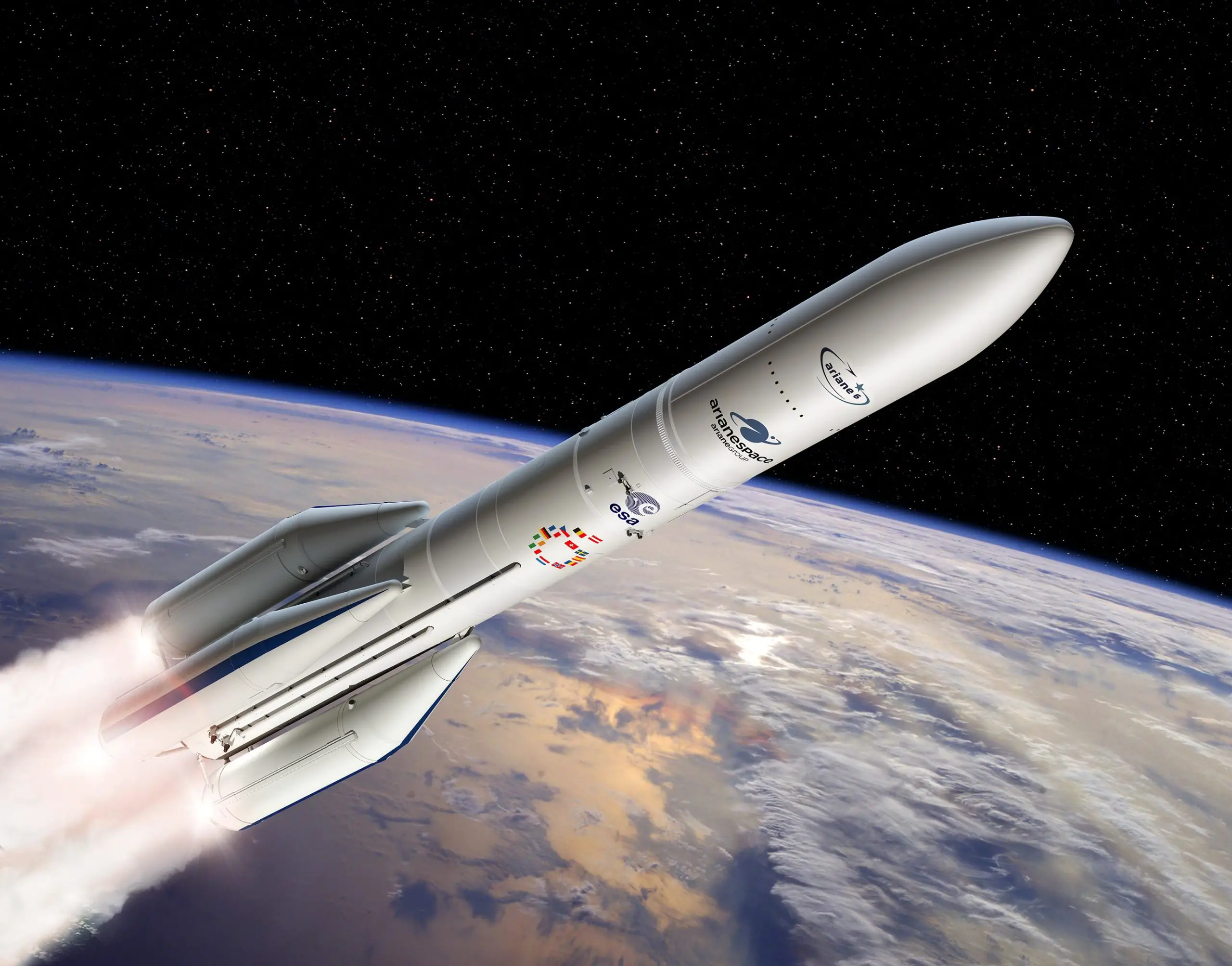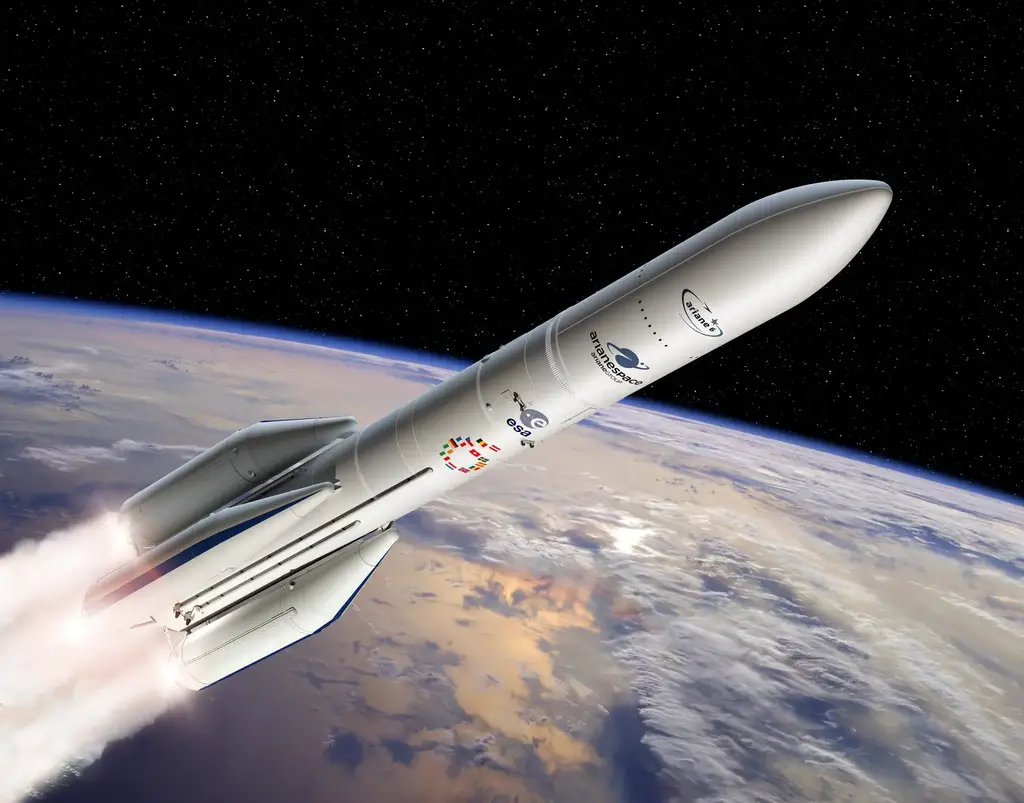

Artist’s view of the configuration of Ariane 6 using four boosters (A64). Credit: ESA – D. Ducros
ESA’s Ariane 6 vehicle tested its Vinci and APU engines in Germany, marking a step forward in Europe’s space technology and collaboration efforts.
On September 1, 2023, ESA’s all-new Ariane 6 launch vehicle fired its two upper-stage engines to simulate the way they will have to operate together at German aerospace agency DLR’s engine test center in Lampoldshausen, Germany. The test – of the new Vinci engine and a smaller Auxiliary Power Unit (APU) – took place on a purpose-built test bench.
Innovative Features of Ariane 6
Vinci, the upper stage engine of Ariane 6 fed by liquid hydrogen and oxygen, can be stopped and restarted multiple times – to place satellites into different orbits and then de-orbit the upper stage, so it is not left behind as hazardous debris in space.
The APU makes it possible for Vinci to restart in space, by maintaining adequate pressure in the fuel tanks and preventing bubbles in the fuel lines. The power unit uses small amounts of liquid hydrogen and oxygen from the main tanks – replacing a system that relied on large quantities of tanked helium.
Ariane 6: Europe’s Next-Generation Heavy-Lift Launcher
Ariane 6 is an all-new design, created to succeed Ariane 5 as Europe’s heavy-lift launch system. This autonomous capability to reach Earth orbit and deep space is the foundation of Europe’s vision of space-enabled navigation, Earth observation, scientific, and security services. This vision is a reality thanks to the sustained dedication of thousands of talented people working in ESA’s 22 Member States who call themselves #SpaceTeamEurope.
ESA owns and manages the Ariane 6 program and defines its performance objectives; ArianeGroup is the prime contractor, and the launch operator is Arianespace. France’s space agency, CNES, operates Europe’s Spaceport in French Guiana – the home of Ariane launchers since the first liftoff in 1979.